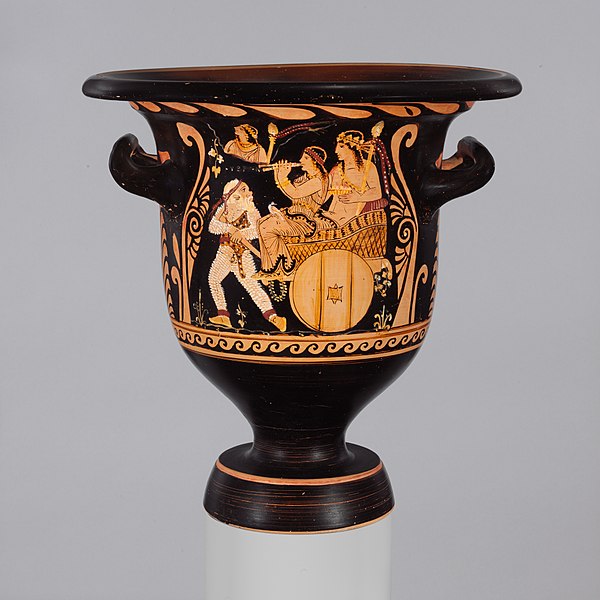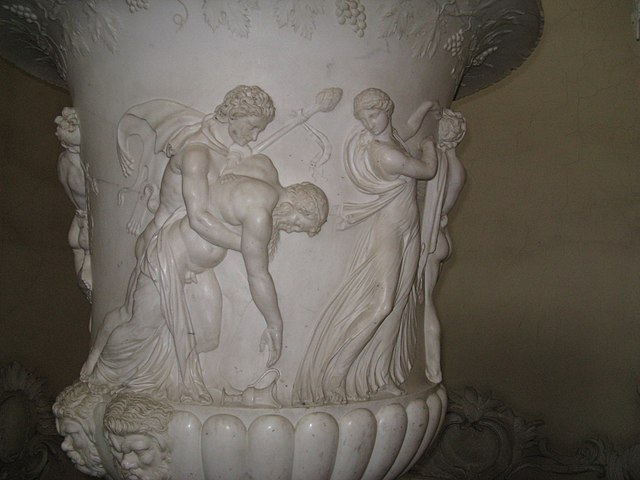In Greek mythology, Silenus was a companion and tutor to the wine god Dionysus. He is typically older than the satyrs of the Dionysian retinue (thiasos), and sometimes considerably older, in which case he may be referred to as a Papposilenus. Silen and its plural sileni refer to the mythological figure as a type that is sometimes thought to be differentiated from a satyr by having the attributes of a horse rather than a goat, though usage of the two words is not consistent enough to permit a sharp distinction.
Roman copy of Hellenistic statue of Silenus holding a bunch of grapes and a cup of wine, Vatican Museums (Pius-Clementine Museum, Room of the Muses), Rome
Front side of a Roman sarcophagus, depicting the wedding of Dionysos and Ariadne, with old Silenus figuring in their entourage (sixth figure from the right), 150–160 CE (Glyptothek, Munich)
Papposilenus in a Dionysian procession, bell-krater from Paestum, Magna Graecia, c. 355 BC (Metropolitan Museum of Art)
Satyr holding a thyrsus, supporting a drunken ivy-wreathed silenus, from the Borghese Vase, 1st century BC (Louvre)
In Greek mythology, a satyr, also known as a silenus or silenos, and sileni (plural), is a male nature spirit with ears and a tail resembling those of a horse, as well as a permanent, exaggerated erection. Early artistic representations sometimes include horse-like legs, but, by the sixth century BC, they were more often represented with human legs. Comically hideous, they have mane-like hair, bestial faces, and snub noses and they always are shown naked. Satyrs were characterized by their ribaldry and were known as lovers of wine, music, dancing, and women. They were companions of the god Dionysus and were believed to inhabit remote locales, such as woodlands, mountains, and pastures. They often attempted to seduce or rape nymphs and mortal women alike, usually with little success. They are sometimes shown masturbating or engaging in bestiality.
Satyr
According to M. L. West, satyrs bear similarities to figures in other Indo-European mythologies, such as the Slavic leshy (pictured) and some form of similar entity probably originated in Proto-Indo-European mythology.
The goat on the left has a short goat tail, but the Greek satyr on the right has a long horse tail, not a goat tail (Attic ceramic, 520 BC).
Detail of a krater, dating to c. 560–550 BC, showing a satyr masturbating. Athenian satyr plays were characterized as "a genre of 'hard-ons.'"








